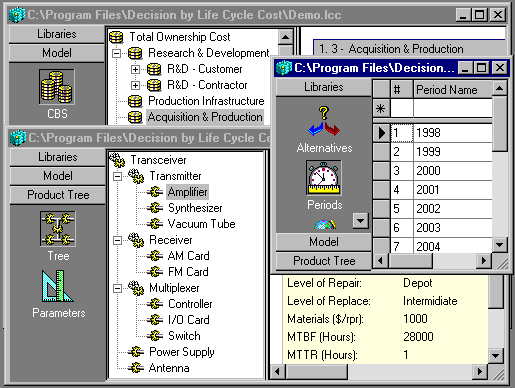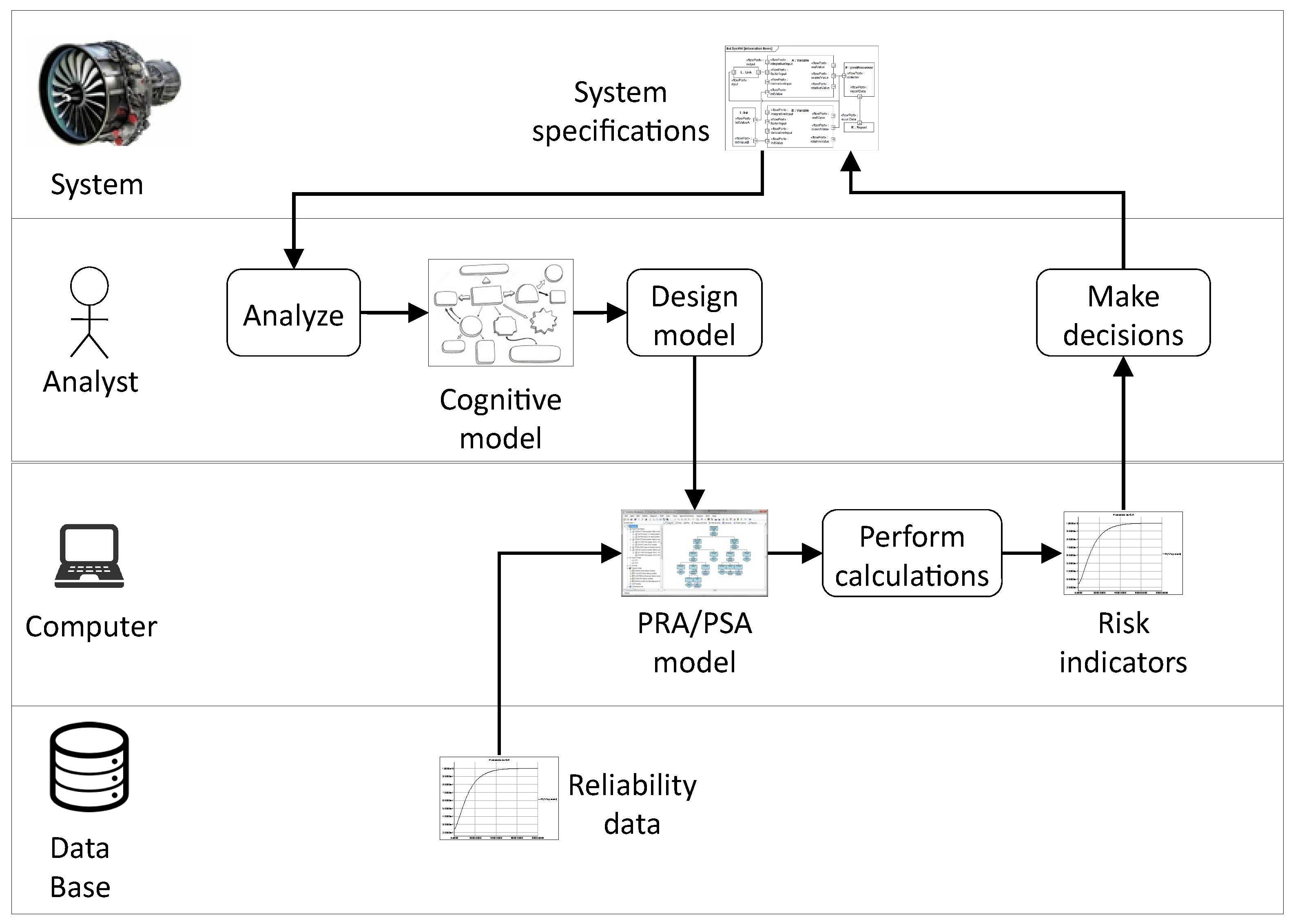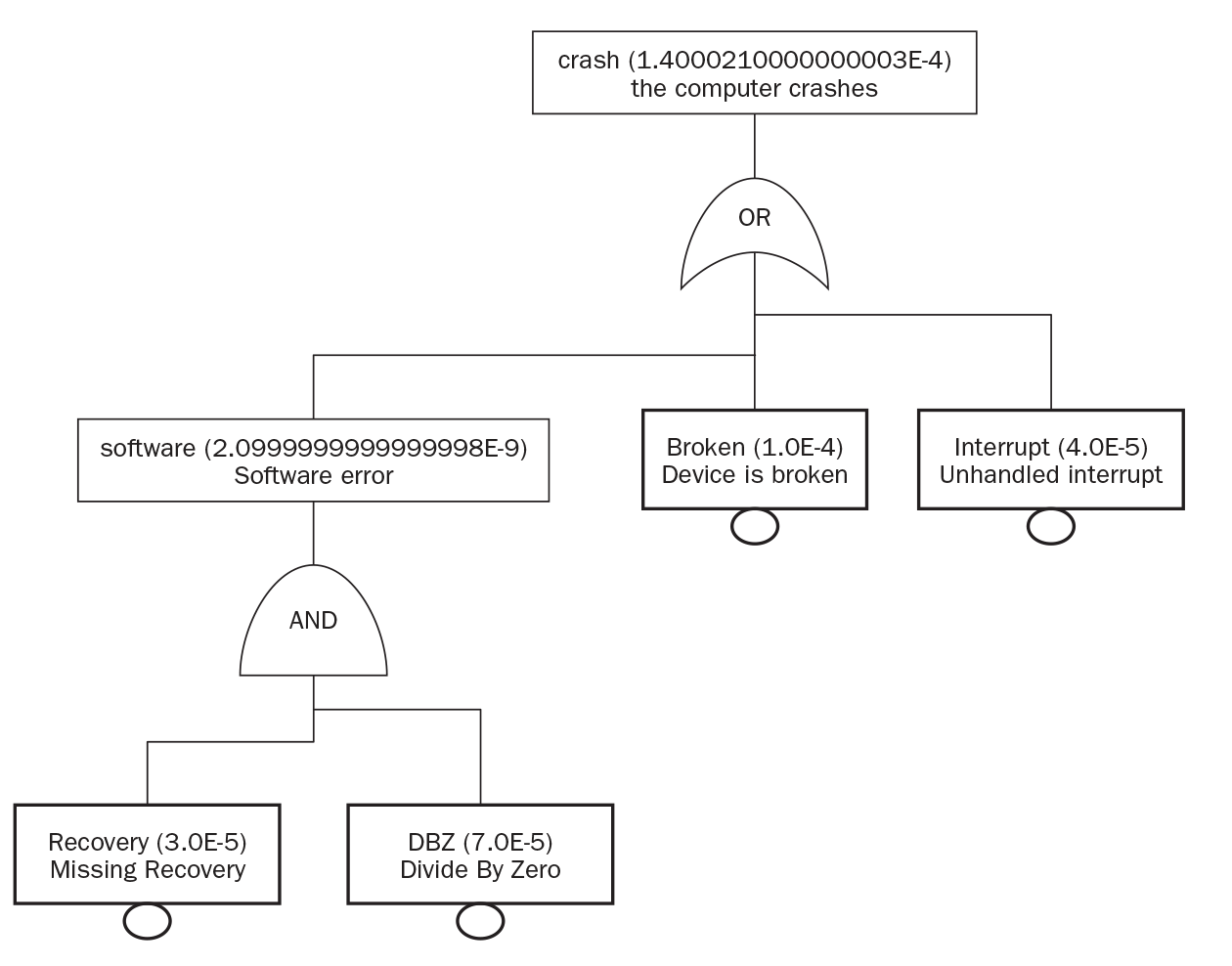


The simplification reduces the tree to an equivalent diagram displaying the smallest combinations of independent component failures which could result in the fault symbolized by the root of the tree and called the top event. The minimal cut-set approach uses disjunctive normal form in Boolean algebra and various Boolean operators to simplify very complicated tree structures composed of AND/OR gates. This paper suggests that given the considerable (and growing) literature of expert systems for diagnostics and maintenance, consideration of the theory of minimal cut sets should be most beneficial.
#Cafta fault tree editor code#
The MODULE code has the advantage that it can calculate the cut sets, importances, and uncertainties in a single run with little increase in computing time over other codes and that it can be used in personal computers. Two examples are fault trees of the auxiliary feedwater system (AFWS) of Korea Nuclear Units (KNU)-1 and -2, which have 54 gates and 115 events, 39 gates and 92 events, respectively. To verify the MODULE code, two examples are selected and the results and computation times are compared with those of SETS, FTAP, CONINT, and MOCUP on both Cyber 170-875 and IBM PC/AT. The flow diagram of the MODULE code is shown. more » MODULE can also prepare input for SETS for the case of a large fault tree that cannot be handled by MODULE.

The code MODULE was developed to carry out the above calculations simultaneously without linking input and outputs to other codes. There have been problems when the codes run each other and the input and output are not linked, which could result in errors when preparing input for each code. For example, SETS and FTAP are used to determine cut sets Importance for importance calculations and Sample, CONINT, and MOCUP for uncertainty analysis. Various computer codes have been used for these purposes. The major components in a system reliability analysis are the determination of cut sets, importance measure, and uncertainty analysis. For example, to perform ''what if'' studies, you can change event probabilities, or set events to TRUE or FALSE to set the effect on the top event without having to regenerate the cut sets. It lets you perform sensitivity and importance studies. This editor is designed to help extract information from the analysis. The cut set results can then be loaded into CAFTA's cut set results editor. Its efficient algorithm uses all available memory and can truncate on either cut set size or probability.
#Cafta fault tree editor generator#
CAFTA's cut set generator performs the logical reduction of any gate in the fault tree model to find the minimal cut sets. Event names are automatically added to the database as they are added to the fault trees.

This database contains descriptions, reliability and uncertainty more » data, source and user-defined fields for each event in the fault tree model. This lets you store data for individual events and groups of events separately, minimizing the updating effort. All data of the fault tree models is stored in a multi-level database. It has numerous editing capabilities, with syntax and logic checking, to support the building and maintaining of large fault tree models. CAFTA's fault tree editor is a full-feature, full-screen, logic model editor. It includes a full-screen fault tree editor, a multi-level reliability database, a powerful cut set generation routine, and a cut set results editor. It is also shown that usual bottom-up algorithms based on the standard modularization technique with truncation of low-probability cut sets can lead to great computer time expenditures with a large upper bound for the probability of system failure due to truncated cut sets (, number = 3,ĬAFTA is a comprehensive PC-based fault tree workstation. The main aim of this article is to describe the modern state of fault tree technique and to show the pricipal difficulties arising by the analysis of large and complex fault trees containing many so-called replicated (or repeated) gates and events.


 0 kommentar(er)
0 kommentar(er)
